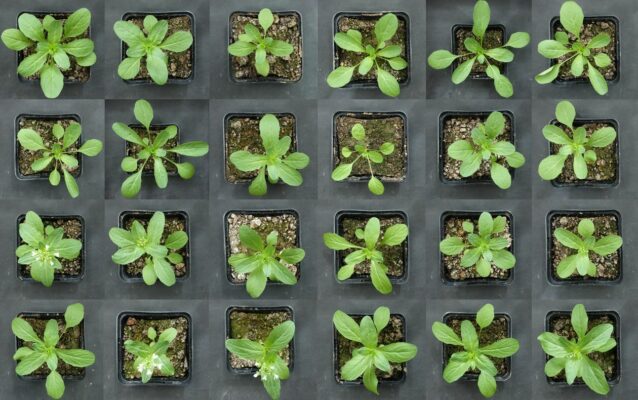University of Tübingen-led research team investigates influence of genes and environment on natural epigenetic variations of the common wild plant.
Small differences in DNA sequence contribute to heritable variations within a species, as do chemical modifications of DNA called epigenetic changes. In order to better understand the significance of such epigenetic changes for the evolution of plants, an international research team led by Professor Oliver Bossdorf from the Institute of Evolution and Ecology at the University of Tübingen investigated a large number of populations of Thlaspi arvense or field pennycress in a Europe-wide study. The researchers linked DNA sequences and environmental data from the places of origin with the epigenetic modifications of this wild plant. According to their results, a large part of the epigenetic variation is mainly determined by the DNA sequence. However, part of the epigenetic variation is strongly related to the climatic conditions of the place from which the plant originated. In agriculture, field pennycress could become important in the future as a winter cover crop and as a source of biofuel. The study has been published in the latest edition of PLoS Genetics.
Thlaspi arvense is an annual white-flowering wild plant in the crucifer family, native to much of Europe and Asia. Its common name comes from the round shape of its seed pods, which are reminiscent of coins. For the study, the research team collected seeds from 207 wild pennycress populations throughout Europe and grew the seeds in the laboratory under standard conditions. From samples of these plants, they then analyzed the complete DNA sequences, as well as the ‘methlyomes’, the complete sequence of DNA methylations – important epigenetic changes that influence whether and how often certain genes are transcribed.
Potential cash crop
“One can only understand the importance of epigenetics for the evolution and adaptability of plants if one has extensive and high-resolution data on both the genetic and epigenetic variation of many plant origins and their environmental conditions. Until now, such data were only available for a few model plants in plant research, such as the thale cress, Arabidopsis thaliana,” says Oliver Bossdorf. He and his team have now, for the first time, carried out such a combination study on a wild plant collected at many natural locations.
“We found a strong geographical variation in the DNA methylations of the genome of field pennycress. A large part of this is directly related to the DNA sequence. However, depending on the genomic context, an important proportion is also determined by the environmental conditions at the plant’s place of origin,” says Bossdorf. This suggests that epigenetic variations in field pennycress could play a role in its short-term adaptation to climatic conditions. Field pennycress is currently being developed as the basis for a new biofuel and will likely be used in the future as a cover crop in winter, says Bossdorf. “Our results could therefore also be useful for agriculture, especially for the cultivation of field pennycress under changing climate conditions.”
Read the paper: PLoS Genetics
Article source: Universitaet Tübingen
Author: Janna Eberhardt
Image: For the new study, pennycress plants were grown under standardized conditions from the seeds of different populations across Europe. Credit: Dario Galanti






